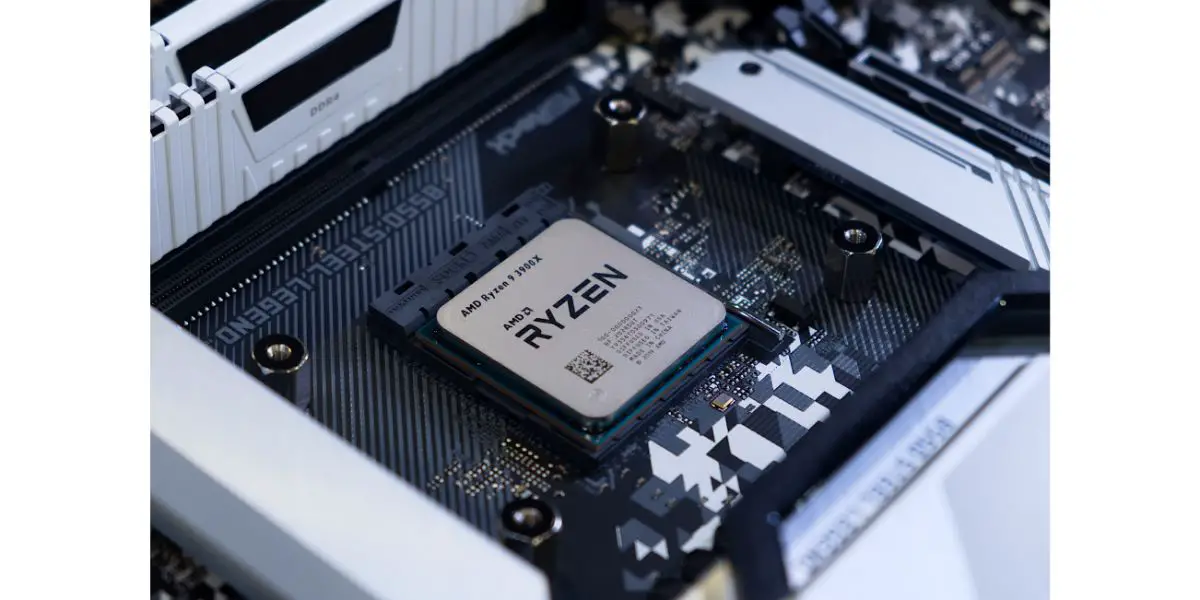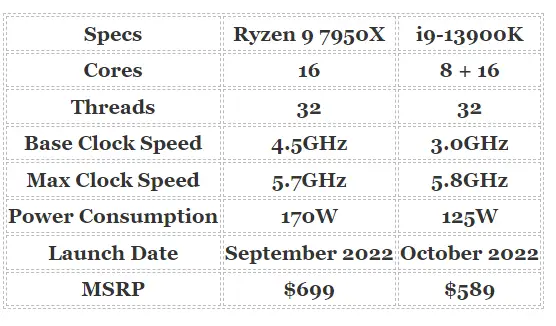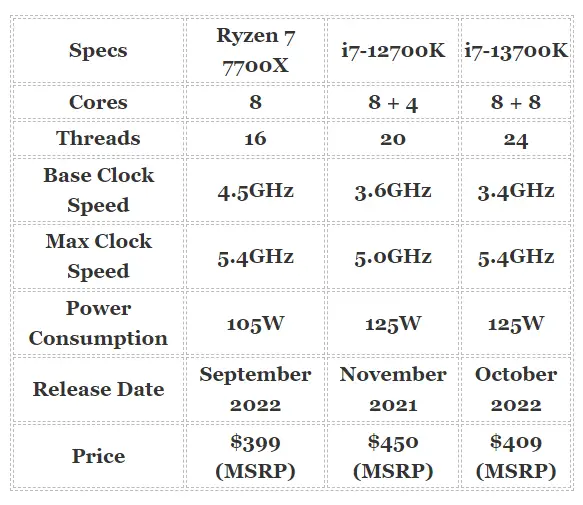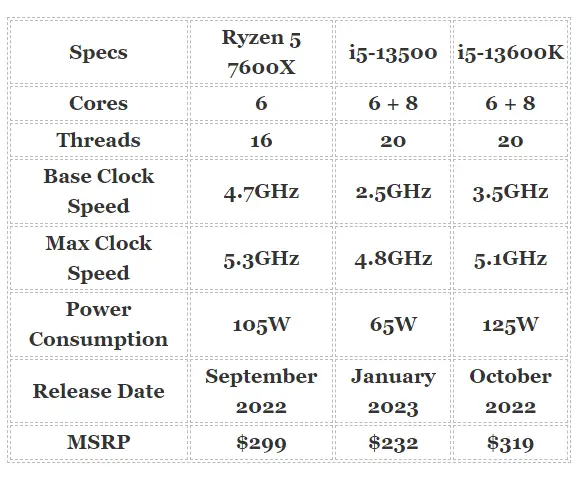Disclaimer: This post may contain affiliate links, meaning we get a small commission if you make a purchase through our links, at no cost to you. For more information, please visit our Disclaimer Page.
When building a computer or looking for a laptop, you only have two options for the processor: Intel or AMD. Intel has been the best CPU manufacturer for decades, while AMD has always been the “affordable” option. So, why are AMD processors cheaper, and do they really offer better value?
Table of Contents
Are AMD Processors Better Value Than Intel?
For years, AMD has been the go-to processor for PC enthusiasts who want to build a computer with excellent performance minus the premium price tag. If you’re going to use an AMD processor for your computer build, you have two options:
- Build one with the same specs for a lower price.
- Build a computer of the same price and get better performance.
Anyone who built a computer over the past decade knows enough to choose AMD for their build because it gives them better value. However, everything changed when AMD released their Ryzen 7000 series.
Until recently, if you wanted a PC build that offered great value, AMD was always the clear winner. Now, if you want to build a PC with great value, the answer would be: it depends.
AMD will still give you great value if you want the fastest processor based on pure, raw performance. However, if you’re looking for a mid-range build, Intel offers some interesting processors with the perfect balance between price and performance.
Why Do People Think AMD Processors Have Better Value?
AMD has been the underdog in the processor competition for decades. In fact, according to Statista’s records going back to 2012, Intel’s CPU market share had never gone below 70% until Q3 of 2019, when its market share dropped from 76.9% to 68.8% — 2 years after AMD released their Zen processors.
In almost every market, the dominant player or the one that makes the best product can also charge a premium on their lower-end products. Their perceived value is much higher than their competitor, allowing them to increase their prices.
For Intel, its dominance was solidified by decades of manufacturing the best CPUs.
So, whenever they release a product, their price becomes the “standard” for pricing. AMD’s strategy has been to compete on performance per dollar, which gave them the reputation for having the best value CPUs. Every processor they released was either more affordable or powerful than Intel’s in the same price range.
One example was in 2011 when Intel released their i5 2400S “gaming” CPU with an MSRP of $195. It was slower than AMD’s FX-6100, with an MSRP of $165. However, people still flocked to Intel because it’s an Intel chip (so it has to be good) and because they marketed it as a “gaming” CPU.
On the other hand, AMD focused on building high-performance chips that provided the same level or better performance than Intel for a lower price point. This became especially clear when AMD released their Zen CPUs which offer better performance than Intel’s chips at a lower price point.
Today, AMD and Intel are competing for the throne of the best CPU manufacturer with the AMD Ryzen 9 7950X and Intel i9 13900K. Here’s a table to compare both HEDT processors:
Tests show that the i9-13900K performed better for gaming. However, Ryzen 9 7950X performed better for 3D rendering and other resource-intensive productivity tasks.
The difference in pricing is interesting because Intel now has a processor with comparable performance for a price tag over $100 cheaper than Ryzen’s offering. It’s far from the $1059 MSRP of the i7-5960X when it was released in 2014.
Back then, Intel was the go-to for PC builders, and AMD was the only processor of choice for people trying to build a “value” PC. Note that the i9-13900K is Intel’s flagship consumer CPU.
Today, even the mid-range AMD Ryzen 7 7700X is at the same price point as Intel i7-13700K and much more expensive than the Intel i7-12700K.
Here’s a table of their specs for comparison:
An Intel chip released almost a year earlier than AMD’s Ryzen 7 already has more cores and better multi-thread performance. One can argue that even the older Intel chip offers better value than AMD’s mid-range 7000 series processor.
The lower-tier processors compete even more with Intel’s i5-13500 and i5-13600K and AMD’s Ryzen 5 7600X. Here’s a table that can help you compare these three processors:
The point of all this is that AMD’s pricing has nothing to do with its manufacturing cost but with the perceived value of AMD processors.
Before the release of Zen processors, AMD’s profits were much smaller than Intel’s, and they only relied on volume sales from businesses. AMD was the “economical” choice that provided businesses with low-cost computers that worked efficiently.
When AMD released the Zen processors, Intel didn’t really have a processor that could compete with them. Intel’s releases were either more expensive or slower than their AMD counterparts. This lack of competition from Intel lasted for years, further solidifying the impression that AMD processors offer better value than Intel.
Unfortunately, any company that produces the “best” flagship product will pull up the price of their lower-tier products, which is evident with the Ryzen 7000 series.
The 7000 series weren’t the “value” processors people were expecting. They were either comparable in performance and price or lackluster and more expensive than their Intel counterparts.
So, AMD being the “better value” processor may have been true in the past, but now that they have “real” competition, the “better value” perception starts to become a bit blurry.
Now, the consumers determine which processor can provide them with better value. Both manufacturers have a different approach to their architecture, affecting the overall performance of the system you’re trying to build.
Only time will tell whether the recent releases were Intel’s way of reclaiming their lost momentum or AMD is starting to lose its throne as the “best value” CPU manufacturer.
AMD vs. Intel: Which Makes the Best Processor?
AMD is pushing the boundaries of what consumer-grade and professional desktop computers can do, while Intel is adapting to the rise of AMD’s brand recognition and market share. Instead of paying for the Intel “premium” to build a high-end desktop, we now have competitively priced processors that give consumers better options.
If you look at all the processors from both companies, including AMD’s Threadripper and Intel’s W-3300 series, it’s clear that AMD makes the best processor you can buy (64 cores and 128 threads). However, it doesn’t mean that the best processor is also what’s best for you.
Even the Ryzen 9 7950X, which is AMD’s best consumer-grade processor, has more power than most people would need for all their tasks. Unless your tasks involve 3D rendering, you won’t be able to get as much value from it as the lower-tier Ryzen 7000 series.
Most people will get great value from a Ryzen 7 because, besides its performance, AMD also offers future-proofing for their Zen processors. Unfortunately, if you buy a Ryzen 7000 series, you’ll have to upgrade your entire system.
The 7000 series will use the AM5 socket for the motherboards, which also requires DDR5 RAM sticks. So, if you want to use a 7000 series processor from AMD, you may not get the best value from it yet, because of all the upgrades you’ll need.
Also, here’s a good video showing the pros and cons of AMD and Intel processors.
Find the Processor That Offers the Best Value for You
Instead of looking at the specs of the best processors from AMD, you have to consider what’s really best for you. Do you want to spend more to future-proof your system with the new AM5 socket, or are you only looking for a system that can work efficiently for your daily tasks without breaking the bank?
AMD’s Ryzen 5000 series offers great value, and its support for AM4 will give you many cheaper options for your build. If you’re looking for a processor that can provide great value, you might find it in one of the Ryzen 7000 series’ predecessors.
Conclusion
AMD still provides great value for its processors, and you can still find affordable options for your next build. However, they are going through serious competition now with Intel’s latest releases. Only time will tell whether AMD can keep its throne for making the best-value processors.




